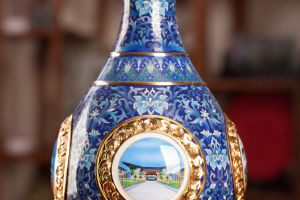
Icons of Painting

As an important part of human civilization, the art of painting has attracted countless artists who seek to express emotions and thoughts through their unique perspectives and techniques.
Among the many great painters, some names are forever remembered in the annals of history for their outstanding works and influence.
1. Leonardo da Vinci
Leonardo da Vinci is undoubtedly ranked first. He is one of the three great men of the Italian Renaissance and the most perfect representative of that era.
Not only a famous painter, da Vinci also made significant achievements in music, mathematics, anatomy, biology, invention, and architecture. His paintings and research have played a pivotal role in the development of the world.
Related
 Why can't you take good photos at night? 90% of people don't understand these key points!
Why can't you take good photos at night? 90% of people don't understand these key points!
 Understanding the Distinctions Between Classical and Folk Guitars.
Understanding the Distinctions Between Classical and Folk Guitars.
 Have you ever seen a Djembe? How well do you know it?
Have you ever seen a Djembe? How well do you know it?
 Embracing Modern Minimalism: The Timeless Elegance of Black, White, and Gray.
Embracing Modern Minimalism: The Timeless Elegance of Black, White, and Gray.
 Can't photograph such a beautiful floral? Here are the floral photography tips!
Can't photograph such a beautiful floral? Here are the floral photography tips!
 There are quite a few benefits and advantages to investing in collectibles.
There are quite a few benefits and advantages to investing in collectibles.
2. Pablo Picasso
Pablo Picasso, the greatest artistic genius of modern times, achieved a level of fame comparable to the Renaissance masters in his teenage years. He created a new wave of Cubism and made significant breakthroughs in Western modern art.
Throughout his life, he experimented with nearly ten painting styles and excelled in sculpture, printmaking, and pottery, continuing to influence us even after his death.
3. Peter Paul Rubens
Born into a wealthy family in Germany, Peter Paul Rubens had a passion for art from childhood. He inherited Renaissance painting techniques, fused humanistic ideas with traditional national art, and developed his unique style, becoming a representative figure of Baroque art.
4. Michelangelo Buonarroti
Michelangelo Buonarroti, Raphael, and Leonardo da Vinci are known as the three masters of the Renaissance. Renowned for his sculptures, Michelangelo's works such as "David" and "Moses" are world-famous.
His achievements in painting are also highly regarded, with "The Creation of Adam" praised by countless admirers. His style has influenced artists for centuries.
5. Paul Cézanne
While less famous in the East compared to Van Gogh, Cézanne is revered in the Western art world as the father of modern painting and modern art modeling. His paintings have had a profound impact on subsequent artists, directly altering the course of Western art development.

6. Claude Monet
Monet is revered as the leader and founder of Impressionism. He vigorously promoted Impressionist theory and remains a significant figure not only in France but also worldwide. His works eschew strict realism for capturing atmospheric effects, breathing life into landscapes through the masterful play of light and shadow.
7. Jean-Auguste-Dominique Ingres
If Rembrandt epitomizes the pinnacle of Dutch painting, Ingres represents the apex of French painting. His masterpiece "The Turkish Bath," completed after 26 years of work, stands as a testament to his classical training and leadership in French Neoclassicism from a young age.
8. Rembrandt van Rijn
In the 17th century, Dutch realism reached its zenith with Rembrandt van Rijn at the forefront. He created over 600 oil paintings and 2,000 sketches in his lifetime, including over 100 self-portraits. Renowned for his vivid figure paintings, Rembrandt is rightly hailed as the greatest painter of the Netherlands.
9. Salvador Dalí
Salvador Dalí is recognized as one of the three most representative painters of the 20th century, alongside Picasso and Matisse. His surrealist works made significant contributions to the art world, and his colorful life remains as famous as his artistic legacy.
10. Ilya Repin
In 19th-century art history, Ilya Repin stands as a figure comparable to Monet in fame. His prolific output and realistic portrayals of life have left an indelible mark, particularly in Chinese art education where his methods are widely taught.
These painters are not only masters in the history of art but have also provided endless inspiration and contemplation for artists and audiences in subsequent generations.
Each of these ranked painters has made indelible contributions to the development of painting, leaving behind a valuable artistic heritage that continues to inspire today's and future artists.